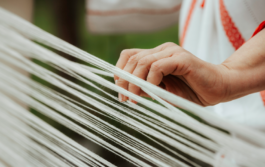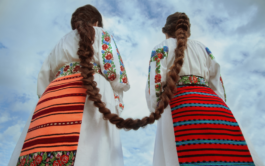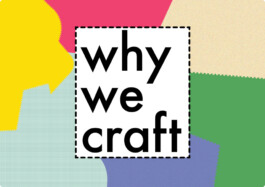Making Space For Inclusion: A WhyWeCraft® Immersive Experience Reflection
Written by Aerielle Rojas*
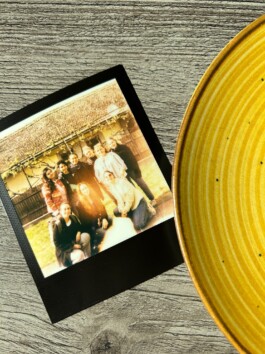
Photo: Copyright 2024 Jyotika Bhardwaj
“It’s a challenge to educate those who are already fed” - Virginia Linul, Craft Custodian
The Inclusion Project
As a master’s student for sustainable fashion, I was excited to learn how to challenge the fashion industry and myself. Out of personal interest, I was looking to dive deeper into the social realm of sustainability, education and inclusion. Aside from the recent increase in representation and diversity campaigns, the fashion industry has a long history of excluding various cultures.This ties back to the Western world profiting from colonialism and dubbing itself the most important sphere of influence. As a result, fashion education broadly lacks inclusivity. From the designers we study to the cultures we talk about, our learning is mainly drawn from Europe and North America (Barry, 2020; Niessen, 2023). Being a second-generation Latino-American only fuelled my interest further. I share the frustration of many communities of color seeking equality in a very unequal world. As a response, I sought out ways to create justice within fashion, which led me to my master’s course.
My program at AMD, Akademie Mode and Design, partnered with WhyWeCraft® to offer two sequential cultural sustainability electives in the first and second semesters. I jumped at the chance to sign up, and was introduced to subjects I had never heard of before. After an introduction to their legal framework, my classmates and I explored the importances of craftsmanship, cultural expression and intangible cultural heritage in the first semester. We were also led to share our personal experiences, and develop a theory of change in an area we were passionate about, which identifies opportunities to create momentum. I shared my theory to change fashion education, with a curriculum that critically evaluated colonialism, and advocated for self-led learning. Listening to other classmates’ theories, it was amazing to discover how there was a whole world of sustainability that wasn’t visible, and how little we all speak of cultural impact.
In the second semester, the elective was paired with a design class and we were tasked with developing a project on fashion inclusivity. Stemming from my interest in the first semester, I felt motivated to create a “decolonial” teaching framework, similar to other researchers like Cheang and Suterwalla, 2020, where we take apart Eurocentric knowledge systems. I was later given the chance to teach in a class with the bachelor’s fashion design program. I imagined this as a sort of fool-proof checklist to be published in a research journal. It would ensure students understood fashion’s colonial roots, the importance of cultural sustainability, and how to question the social influences of their work as designers. Cultural sustainability to me was mainly informed by my personal experience, involving creating new structures and tearing down the old. But when developing this teaching framework further, I quickly realized how little I knew.
What was I doing?
Like my idea of cultural sustainability, I thought that addressing the lack of inclusivity in education began with creating something new to teach altogether. And when given the opportunity to visit WhyWeCraft® custodians in my second semester for this project, I saw it as a way to gain perspective on decolonization and inclusion. Guided by the 3Cs' Rule Consent. Credit. Compensation© framework, I thought my plan was simple. I would start with a literature review to familiarize myself with Romanian culture and colonization’s negative impact on education. Next, I aimed to ask for the custodians’ consent and perspective on what they felt students should learn within my framework, so that we would collaborate on the project together. I would then present the final framework, crediting the custodians at my class’ project exhibition in Berlin.
In my literature review, the more articles I found, the more underprepared I felt. Reading about Romania and collaborative research, I was completely new to the country’s history and felt that academic research methods wouldn’t capture the type of sentiments this project could create. Most importantly, after delving into indigenous research, I learned that I misused the term “decolonial”. Although it is often used to promote the inclusion and equality of Indigenous communities and minorities, decolonization refers to an active fight. It’s a “repatriation of Indigenous land and life; it is not a metaphor for other things we want to do to improve our societies and schools” (Tuck and Yang, 2012). In this sense, my teaching concept certainly didn’t actively fight for repatriation by indigenous community members. It was an act of social justice, among Western university students, at best.
Already in trying to create a framework on this subject, I was experiencing a process of unlearning, complete with feelings of confusion, doubt, and, dare I say it, guilt. I was frustrated at the lack of representation in my education. I hadn’t learned properly about Eastern European cultures, (and yet here I was planning to go research one). Moreover, my project was not a decolonization effort. I was full of questions from here. What was I doing? How would I communicate my ideas to interview custodians? And how in the world would this become a teaching concept?
The turning point
A couple weeks later, I took these findings and feelings with me to Romania. For my classmates and I, submersion into the country for the first time was nothing short of a thrilling adventure. We went on tours of the cities, smiled with locals, and sat around beautiful tables of food every day. I especially loved sharing personal stories and the fresh bread (it’s to die for). However, as our meetings with the craft custodians grew closer and closer, so did my intimidation in my project.
The night before our first meeting with the first custodian, we discussed our project plans with the founder of WhyWeCraft®. As a group, my classmates and I were nervous to meet the custodians and were wondering how we would work with them. To my surprise when presenting my plan-my mindset changed. We discussed how the custodians may not be familiar with ideas of colonization and inclusion for me to ask about. Similarly, holding proper research interviews may not be as feasible either, requiring translation, a set amount of time, and adequate prior communication that didn’t fit within our schedule. Even looking to create and teach a definitive framework itself shouldn’t be the final authority on what inclusion should be within fashion. The type of knowledge they held, and that I was looking to find, was invaluable, intangible, and not something that needs to be edited with the intent of publication.
I swallowed a lump of frustration. I was so deep in my own mindset that no matter how many articles I read, I was still focused on a set, objective outcome. In conversations with my classmates, WhyWeCraft® founder and professor, they offered that my work could serve as a reflection on the experience instead. I agreed to the reflection at that moment, yet still struggled to see how this would transfer into a framework for the bachelor’s students. Nevertheless, I committed to recording my experience, thoughts and feelings from the rest of our journey.
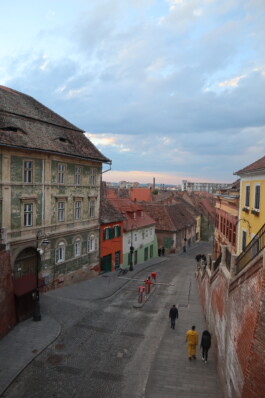
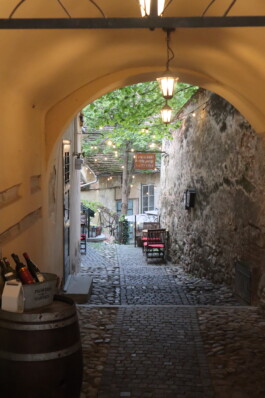
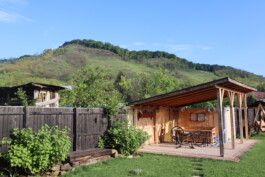
Photos: Copyright 2024 Selda Palaci Alacam
What was I fed?
Another custodian, Ms. Katalin Kovacs had sent us students special handcrafted woven fabric for our projects, in addition to a bottle of Pălinca intended as a present for Ms. Elena. Gifts in tow, we arrived at Ms. Elena Neagu filled with anticipation. She had a dedicated workspace near her home piled high with fabrics, laces, and expertly embroidered garments. I felt shy at first, yet stepping into her sunny workspace, it slowly melted away as we resembled a family gathering on a living room floor. Receiving Ms. Kati’s fabric, Ms. Elena knew their every yarn. For every person she’s ever made a garment, she remembers their measurements. Just by hearing what someone wants to make, she can tell the exact amount of fabric needed. Her skill was unmatched; it was simply a way of knowing. Through the founder’s translation, she expressed how she was sharing her passed down crafting knowledge at the town school, and with a group of young girls, as “instilling parts of the culture”.
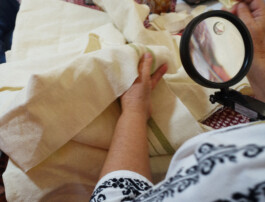
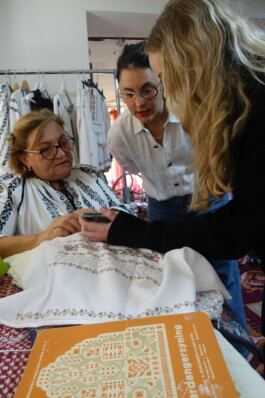
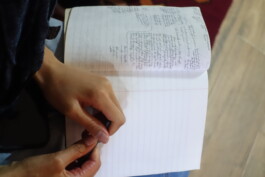
Photos: Copyright 2024 Bernadita Solis
Traveling to Ms.Virginia Linul next, we were all blown away by the amount of Romanian textiles, beadwork and photographs on display. She had created a museum and workshop for visitors to view and learn about local traditions. To our delight, she had a table filled with beads and fabrics for us to make belts and bags-a fashion student’s dream. Walking around our table, she guided our every stitch to create colorful flowers with precision. After a full day of beading and a delicious home-cooked lunch (the bread again, life changing) we reclined around the crafting table as Ms. Virginia shared her experiences with her work. Like Ms. Elena, she too learned her craft from her family, and was outspoken on the importance of educating the next generations. She completed her PhD in ethnography after realizing how researchers would document her work and gain credit and professional reputation, without acknowledgement to her or her culture. Upon discussing this further, she found that it was hard to express the value of cultural, traditional knowledge with both schools and the wider fashion industry.
She then said something that caught my attention: “It’s hard to teach someone who’s already fed.” It made me pause. What had I been fed? Like the students and researchers Ms. Virginia referenced, I was working from a skewed narrative. I felt I needed to publish my project, or create the most comprehensive way to teach about inclusion. This was instead of realizing what I had in front of me. In this moment it became clear that cultural sustainability, inclusion, and my project really, was all about relationships. From Ms. Kati’s gift for Ms. Elena to being welcomed into the home of Ms. Virginia, the whole trip was spent either observing or creating new bonds with others. Not to mention, all the skills we witnessed were passed down through communities and loved ones.
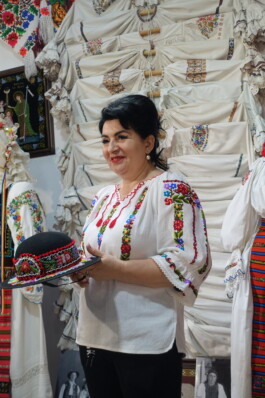
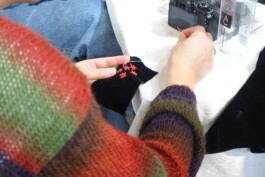
Photos: Copyright 2024 Bernadita Solis
In the end
Afterwards as a class, we discussed our appreciation that both custodians gave thoughts on how education and working with the youth was key to their work in continuing their cultural expressions. With tears in our eyes, we all reached personal, humbling conclusions that cultural sustainability involved so much more than what we thought. Given the space to reflect myself, I realized-you can’t teach inclusivity, but can only make space for it.
I wouldn’t have come to this understanding without the space to reach it on my own. And this is precisely what I took into the bachelor’s fashion design class back in Berlin. I led students through an exercise that allowed them their own space to challenge their final collections through 4 layered questions, also called a Causal Layered Analysis. This exercise is meant to break down complex issues, commonly displayed through an iceberg diagram. Starting from the tip of the iceberg is the event or issue itself, down to its social causes, perspectives, and beliefs as the bottom. Through an example case study and applying the exercise to their own final collections, we discussed how their work could exclude or celebrate certain groups and ideas. Aside from their positive testimonials of the session, the real value of this class session was in the personal learning. I loved how students came up to me afterwards reflecting on how they wanted to adjust or question their design choices for their collections.
Sustainability can be very tangible. We can feel the effects of climate change, and see the piles of garment waste destroying ecosystems. But there is a whole other world that we can’t see. I hadn’t experienced a cultural or relational dimension to sustainability until now, and realized how it was often left out of my university classes and research practice. In other words, cultural sustainability is the way we interact with and respect others. I’m glad I had that moment with Ms. Virginia, she was right. It is hard to adopt a new way of thinking when you’ve already been fed something else. But I’m glad I’m not too full, and that I can make space, to learn something new myself.
* Aerielle Rojas is a sustainability advocate and researcher at Akademie Mode and Design Berlin. Currently completing her Master’s degree exploring sustainability, her research interests include business model innovation, degrowth, and cultural sustainability. Looking to drive measurable impact within the fashion industry, she is enjoying learning (and unlearning) some things along the way.
The Sustainability in Fashion and Creative Industries M.A. is a Berlin-based program that gives current and future professionals an opportunity to put sustainability into practice. Through an interdisciplinary curriculum focused on design, production, and business, students explore various dimensions of sustainability and tailor their approaches with creative projects of their choosing.
References:
Barry, B. (2020, January 6). Op-Ed | How Fashion Education Prevents Inclusivity. The Business of Fashion; The Business of Fashion. https://www.businessoffashion.com/opinions/workplace-talent/op-ed-how-fashion-education-prevents-inclusivity/
Cheang, S., & Suterwalla, S. (2020). Decolonizing the curriculum? Transformation, emotion, and positionality in teaching. Fashion Theory, 24(6), 879-900.
Niessen, S. (2023). 18 Getting Beyond Alterity: Building a Just Post-Fashion Curriculum. Social Justice Pedagogies: Multidisciplinary Practices and Approaches.
Tuck, E. and Yang, K. W. (2012) Decolonization is not a metaphor. Decolonization: Indigeneity, Education & Society, 1(1):1–40.
Making Space For Inclusion: A WhyWeCraft® Immersive Experience Reflection
Written by Aerielle Rojas*

The Inclusion Project
As a master’s student for sustainable fashion, I was excited to learn how to challenge the fashion industry and myself. Out of personal interest, I was looking to dive deeper into the social realm of sustainability, education and inclusion. Aside from the recent increase in representation and diversity campaigns, the fashion industry has a long history of excluding various cultures.This ties back to the Western world profiting from colonialism and dubbing itself the most important sphere of influence. As a result, fashion education broadly lacks inclusivity. From the designers we study to the cultures we talk about, our learning is mainly drawn from Europe and North America (Barry, 2020; Niessen, 2023). Being a second-generation Latino-American only fuelled my interest further. I share the frustration of many communities of color seeking equality in a very unequal world. As a response, I sought out ways to create justice within fashion, which led me to my master’s course.
My program at AMD, Akademie Mode and Design, partnered with WhyWeCraft® to offer two sequential cultural sustainability electives in the first and second semesters. I jumped at the chance to sign up, and was introduced to subjects I had never heard of before. After an introduction to their legal framework, my classmates and I explored the importances of craftsmanship, cultural expression and intangible cultural heritage in the first semester. We were also led to share our personal experiences, and develop a theory of change in an area we were passionate about, which identifies opportunities to create momentum. I shared my theory to change fashion education, with a curriculum that critically evaluated colonialism, and advocated for self-led learning. Listening to other classmates’ theories, it was amazing to discover how there was a whole world of sustainability that wasn’t visible, and how little we all speak of cultural impact.
In the second semester, the elective was paired with a design class and we were tasked with developing a project on fashion inclusivity. Stemming from my interest in the first semester, I felt motivated to create a “decolonial” teaching framework, similar to other researchers like Cheang and Suterwalla, 2020, where we take apart Eurocentric knowledge systems. I was later given the chance to teach in a class with the bachelor’s fashion design program. I imagined this as a sort of fool-proof checklist to be published in a research journal. It would ensure students understood fashion’s colonial roots, the importance of cultural sustainability, and how to question the social influences of their work as designers. Cultural sustainability to me was mainly informed by my personal experience, involving creating new structures and tearing down the old. But when developing this teaching framework further, I quickly realized how little I knew.
What was I doing?
Like my idea of cultural sustainability, I thought that addressing the lack of inclusivity in education began with creating something new to teach altogether. And when given the opportunity to visit WhyWeCraft® custodians in my second semester for this project, I saw it as a way to gain perspective on decolonization and inclusion. Guided by the 3Cs' Rule Consent. Credit. Compensation© framework, I thought my plan was simple. I would start with a literature review to familiarize myself with Romanian culture and colonization’s negative impact on education. Next, I aimed to ask for the custodians’ consent and perspective on what they felt students should learn within my framework, so that we would collaborate on the project together. I would then present the final framework, crediting the custodians at my class’ project exhibition in Berlin.
In my literature review, the more articles I found, the more underprepared I felt. Reading about Romania and collaborative research, I was completely new to the country’s history and felt that academic research methods wouldn’t capture the type of sentiments this project could create. Most importantly, after delving into indigenous research, I learned that I misused the term “decolonial”. Although it is often used to promote the inclusion and equality of Indigenous communities and minorities, decolonization refers to an active fight. It’s a “repatriation of Indigenous land and life; it is not a metaphor for other things we want to do to improve our societies and schools” (Tuck and Yang, 2012). In this sense, my teaching concept certainly didn’t actively fight for repatriation by indigenous community members. It was an act of social justice, among Western university students, at best.
Already in trying to create a framework on this subject, I was experiencing a process of unlearning, complete with feelings of confusion, doubt, and, dare I say it, guilt. I was frustrated at the lack of representation in my education. I hadn’t learned properly about Eastern European cultures, (and yet here I was planning to go research one). Moreover, my project was not a decolonization effort. I was full of questions from here. What was I doing? How would I communicate my ideas to interview custodians? And how in the world would this become a teaching concept?
The turning point
A couple weeks later, I took these findings and feelings with me to Romania. For my classmates and I, submersion into the country for the first time was nothing short of a thrilling adventure. We went on tours of the cities, smiled with locals, and sat around beautiful tables of food every day. I especially loved sharing personal stories and the fresh bread (it’s to die for). However, as our meetings with the craft custodians grew closer and closer, so did my intimidation in my project.
The night before our first meeting with the first custodian, we discussed our project plans with the founder of WhyWeCraft®. As a group, my classmates and I were nervous to meet the custodians and were wondering how we would work with them. To my surprise when presenting my plan-my mindset changed. We discussed how the custodians may not be familiar with ideas of colonization and inclusion for me to ask about. Similarly, holding proper research interviews may not be as feasible either, requiring translation, a set amount of time, and adequate prior communication that didn’t fit within our schedule. Even looking to create and teach a definitive framework itself shouldn’t be the final authority on what inclusion should be within fashion. The type of knowledge they held, and that I was looking to find, was invaluable, intangible, and not something that needs to be edited with the intent of publication.
I swallowed a lump of frustration. I was so deep in my own mindset that no matter how many articles I read, I was still focused on a set, objective outcome. In conversations with my classmates, WhyWeCraft® founder and professor, they offered that my work could serve as a reflection on the experience instead. I agreed to the reflection at that moment, yet still struggled to see how this would transfer into a framework for the bachelor’s students. Nevertheless, I committed to recording my experience, thoughts and feelings from the rest of our journey.



What was I fed?
Another custodian, Ms. Katalin Kovacs had sent us students special handcrafted woven fabric for our projects, in addition to a bottle of Pălinca intended as a present for Ms. Elena. Gifts in tow, we arrived at Ms. Elena Neagu filled with anticipation. She had a dedicated workspace near her home piled high with fabrics, laces, and expertly embroidered garments. I felt shy at first, yet stepping into her sunny workspace, it slowly melted away as we resembled a family gathering on a living room floor. Receiving Ms. Kati’s fabric, Ms. Elena knew their every yarn. For every person she’s ever made a garment, she remembers their measurements. Just by hearing what someone wants to make, she can tell the exact amount of fabric needed. Her skill was unmatched; it was simply a way of knowing. Through the founder’s translation, she expressed how she was sharing her passed down crafting knowledge at the town school, and with a group of young girls, as “instilling parts of the culture”.



Traveling to Ms.Virginia Linul next, we were all blown away by the amount of Romanian textiles, beadwork and photographs on display. She had created a museum and workshop for visitors to view and learn about local traditions. To our delight, she had a table filled with beads and fabrics for us to make belts and bags-a fashion student’s dream. Walking around our table, she guided our every stitch to create colorful flowers with precision. After a full day of beading and a delicious home-cooked lunch (the bread again, life changing) we reclined around the crafting table as Ms. Virginia shared her experiences with her work. Like Ms. Elena, she too learned her craft from her family, and was outspoken on the importance of educating the next generations. She completed her PhD in ethnography after realizing how researchers would document her work and gain credit and professional reputation, without acknowledgement to her or her culture. Upon discussing this further, she found that it was hard to express the value of cultural, traditional knowledge with both schools and the wider fashion industry.
She then said something that caught my attention: “It’s hard to teach someone who’s already fed.” It made me pause. What had I been fed? Like the students and researchers Ms. Virginia referenced, I was working from a skewed narrative. I felt I needed to publish my project, or create the most comprehensive way to teach about inclusion. This was instead of realizing what I had in front of me. In this moment it became clear that cultural sustainability, inclusion, and my project really, was all about relationships. From Ms. Kati’s gift for Ms. Elena to being welcomed into the home of Ms. Virginia, the whole trip was spent either observing or creating new bonds with others. Not to mention, all the skills we witnessed were passed down through communities and loved ones.


In the end
Afterwards as a class, we discussed our appreciation that both custodians gave thoughts on how education and working with the youth was key to their work in continuing their cultural expressions. With tears in our eyes, we all reached personal, humbling conclusions that cultural sustainability involved so much more than what we thought. Given the space to reflect myself, I realized-you can’t teach inclusivity, but can only make space for it.
I wouldn’t have come to this understanding without the space to reach it on my own. And this is precisely what I took into the bachelor’s fashion design class back in Berlin. I led students through an exercise that allowed them their own space to challenge their final collections through 4 layered questions, also called a Causal Layered Analysis. This exercise is meant to break down complex issues, commonly displayed through an iceberg diagram. Starting from the tip of the iceberg is the event or issue itself, down to its social causes, perspectives, and beliefs as the bottom. Through an example case study and applying the exercise to their own final collections, we discussed how their work could exclude or celebrate certain groups and ideas. Aside from their positive testimonials of the session, the real value of this class session was in the personal learning. I loved how students came up to me afterwards reflecting on how they wanted to adjust or question their design choices for their collections.
Sustainability can be very tangible. We can feel the effects of climate change, and see the piles of garment waste destroying ecosystems. But there is a whole other world that we can’t see. I hadn’t experienced a cultural or relational dimension to sustainability until now, and realized how it was often left out of my university classes and research practice. In other words, cultural sustainability is the way we interact with and respect others. I’m glad I had that moment with Ms. Virginia, she was right. It is hard to adopt a new way of thinking when you’ve already been fed something else. But I’m glad I’m not too full, and that I can make space, to learn something new myself.
* Aerielle Rojas is a sustainability advocate and researcher at Akademie Mode and Design Berlin. Currently completing her Master’s degree exploring sustainability, her research interests include business model innovation, degrowth, and cultural sustainability. Looking to drive measurable impact within the fashion industry, she is enjoying learning (and unlearning) some things along the way.
The Sustainability in Fashion and Creative Industries M.A. is a Berlin-based program that gives current and future professionals an opportunity to put sustainability into practice. Through an interdisciplinary curriculum focused on design, production, and business, students explore various dimensions of sustainability and tailor their approaches with creative projects of their choosing.
References:
Barry, B. (2020, January 6). Op-Ed | How Fashion Education Prevents Inclusivity. The Business of Fashion; The Business of Fashion. https://www.businessoffashion.com/opinions/workplace-talent/op-ed-how-fashion-education-prevents-inclusivity/
Cheang, S., & Suterwalla, S. (2020). Decolonizing the curriculum? Transformation, emotion, and positionality in teaching. Fashion Theory, 24(6), 879-900.
Niessen, S. (2023). 18 Getting Beyond Alterity: Building a Just Post-Fashion Curriculum. Social Justice Pedagogies: Multidisciplinary Practices and Approaches.
Tuck, E. and Yang, K. W. (2012) Decolonization is not a metaphor. Decolonization: Indigeneity, Education & Society, 1(1):1–40.
Endorsed by

Powered by
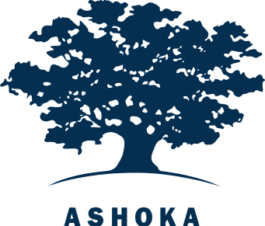
Project developed under the umbrella
of the Cultural Intellectual Property Rights Initiative®

This activity was a winner of the 2020 EU Social Innovation Competition from the European Union’s Horizon 2020 research and innovation programme.

Follow us
Our Linkedin page
Instagram Community
Our Youtube channel (soon)
© 2021-2024 Asociația WhyWeCraft, all rights reserved - WhyWeCraft®
LEARN WITH US
WORK WITH US
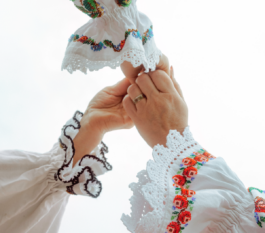
BE PART OF THE MOVEMENT FOR CULTURAL SUSTAINABILITY IN FASHION
Endorsed by

Powered by

Project developed under the umbrella
of the Cultural Intellectual Property Rights Initiative®

This activity was a winner of the 2020 EU Social Innovation Competition from the European Union’s Horizon 2020 research and innovation programme.

Follow us
Our Linkedin page
Instagram Community
Our Youtube channel (soon)
© 2021 Asociația WhyWeCraft, all rights reserved - WhyWeCraft®
